As long term readers of this blog know, I have always been drawn to slightly less conventional destinations. Don’t get me wrong, I love a tourist hotspot as much as the next person but part of me craves something a little less polished.
Abandoned sites get my mind whirring as few other attractions do. After exploring Chernobyl a few years back, my interest in these kinds of places only grew. However, where I’m from, abandoned buildings rarely stay that way for long which limits my exploration opportunities!
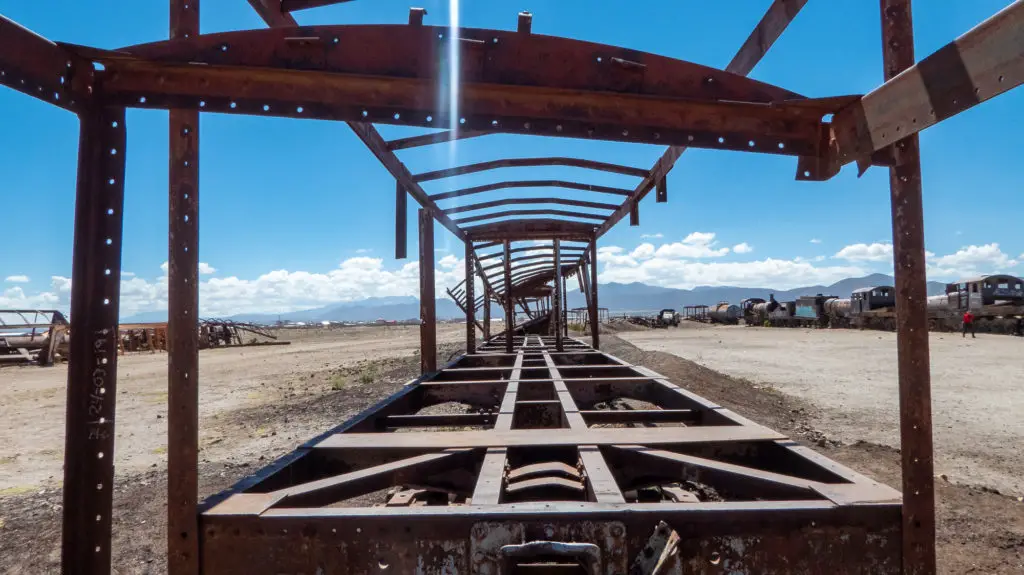
Prior to my trip to Bolivia, I had read about the famous Train Graveyard (also known as the Train Cemetery or Cemeterio de Trenes in Spanish), close to the famous Uyuni salt flats. Knowing I would be visiting the salt flats anyway, I decided to make a stop at the Bolivia’s Train Graveyard.
Conveniently for me, the three-day tour that Tim and I arranged to the salt flats would also be making a stop at the Train Graveyard. This would give me a chance to explore the site.
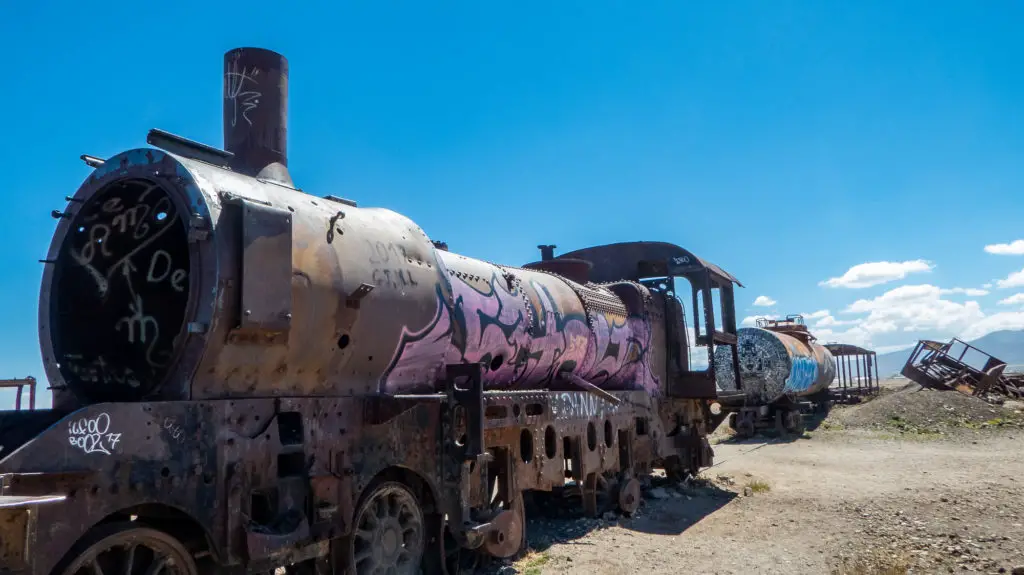
How did Bolivia’s Train Graveyard get there?
During the 19th century, Bolivia’s mining industry was at its height. In order to sustain this economic activity, it was decided that a rail network would be built to connect La Paz to the local mines and also to provide transport links to Chile’s ocean harbours, where the minerals could be exported.
British locomotives were brought in and used in the Bolivian rail network. After the initial construction was complete, further plans were introduced to expand the routes but as war loomed with neighbouring countries and technical difficulties plighted the Bolivians, this was put on hold.
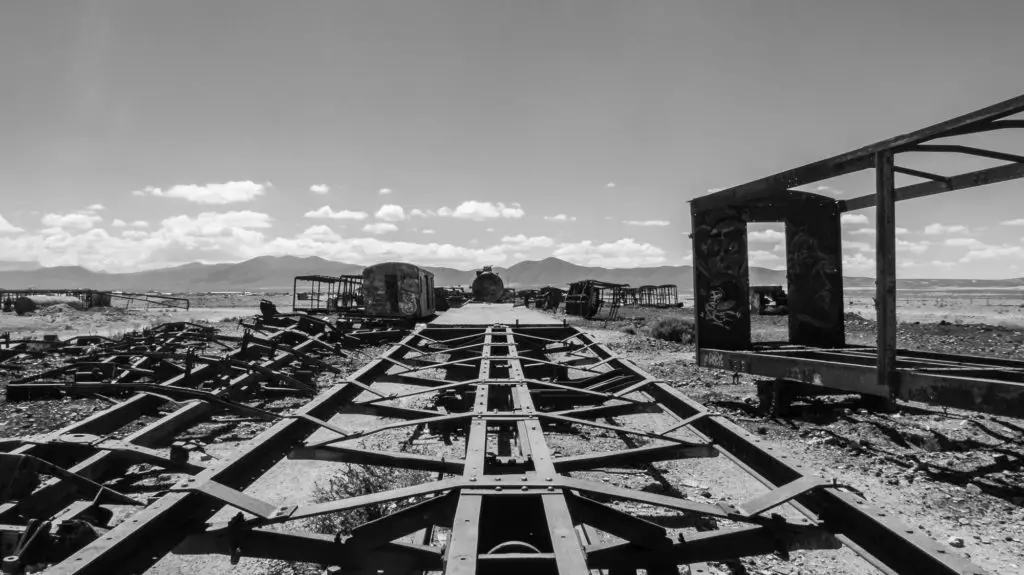
The 1940s saw the mining industry begin to decline massively as natural resources dwindled. As such, there was little economic incentive to keep the trains running. The result was the abandonment of over 100 train carriages in the desert, close to Uyuni town.
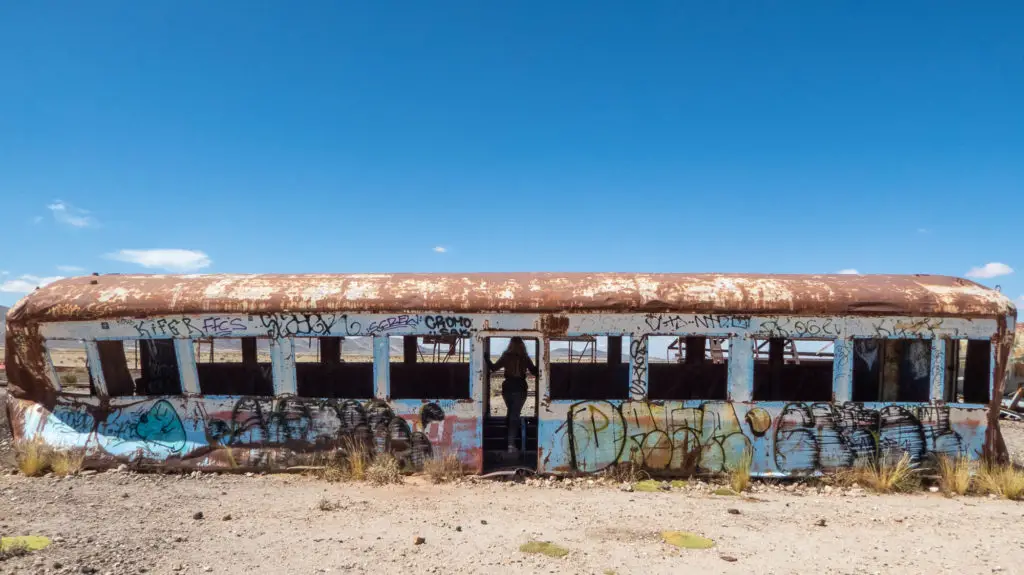
Exploring Bolivia’s Train Graveyard
The only indication that we were approaching the train graveyard came in the form of a tiny sign. We bumped our way over the dry but hilly terrain and the rusted carcasses of the locomotives came into view.
I jumped out of the 4×4, only to see a handful of Bolivian women selling artisanal goods. I guess anywhere there is tourism is fair game for locals.
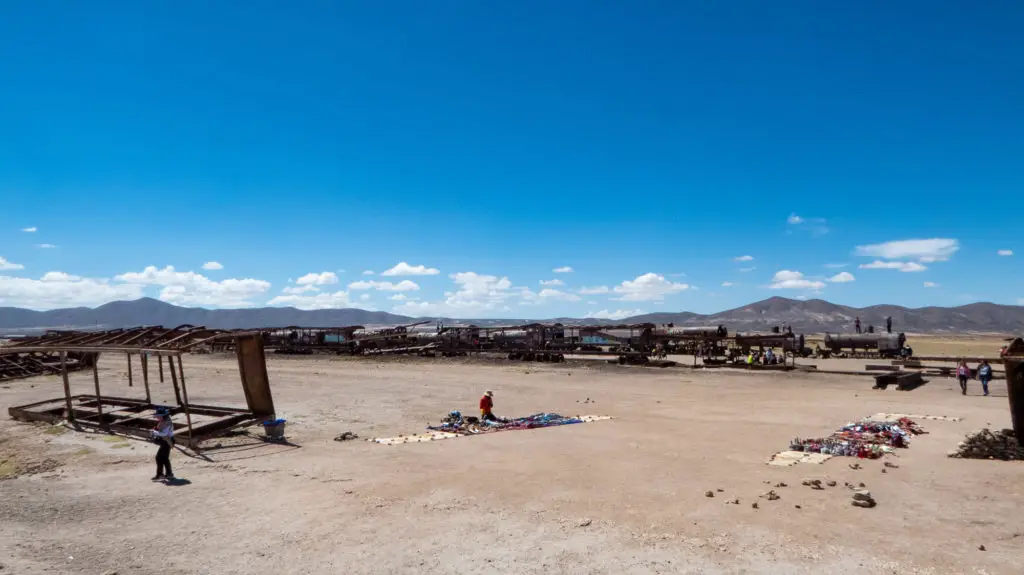
There were hoards of people already at the Train Graveyard when I arrived and I wondered whether I would be able to find any secluded spots in which to explore. There are currently no restrictions in place to protect the old locomotives so the trains are covered in graffiti. There are also no rules prohibiting climbing and there were plenty of tourists posing for photos atop the ruins.
Coming from a health and safety obsessed culture, I had no desired to clamber on top of the trains for photos. Call me a drag but the remains are very rusted and in my opinion, one cut is tetanus waiting to happen.
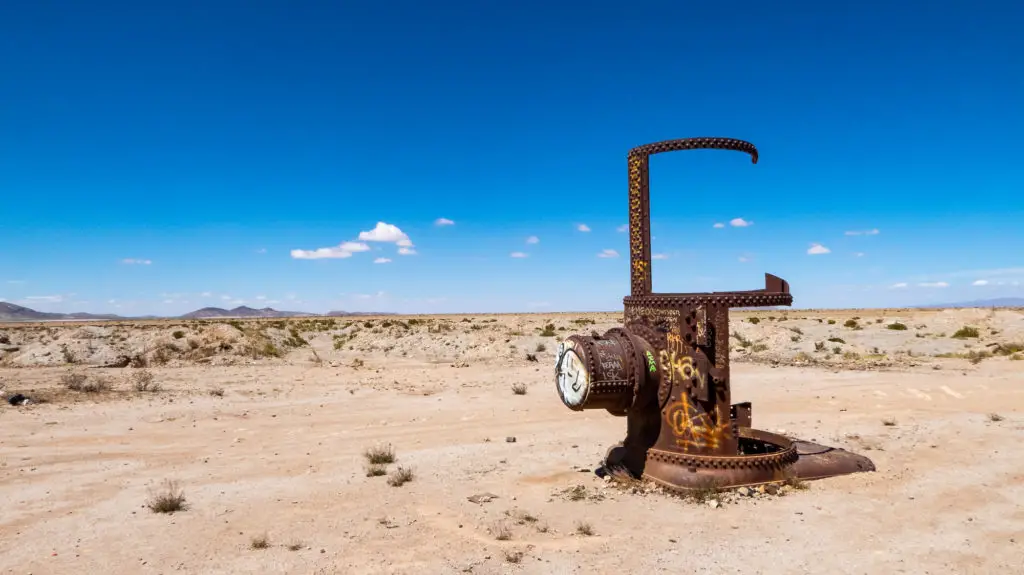
If you do choose to climb on the old trains, beware that they may not be as stable as they look. The salt which blows over from the nearby salt flats has caused these abandoned locomotives to rust and decay much quicker than they would in most other environments.
Despite the crowds, Tim and I managed to find a quiet spot of the graveyard to explore. As much as I understood the other tourist’s enthusiasm, I like to explore these types of places with only the interruption from my own thoughts.
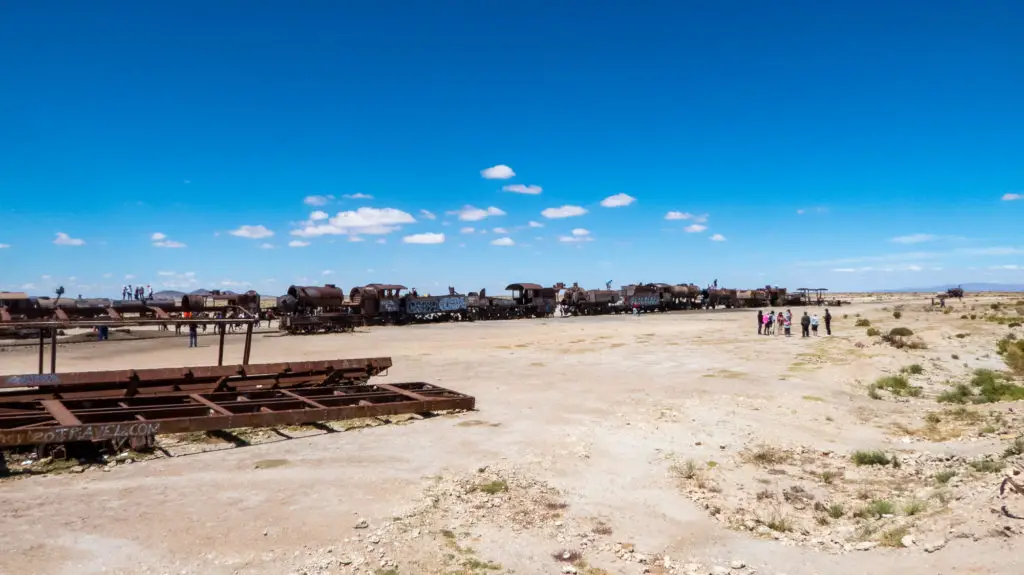
Tim and I made our way along the redundant tracks and examined the graffiti left by those who have made the Train Graveyard a regular haunt. The tags plastering the decaying carriages reveal far more than local gossip but actually gives us an insight into Bolivian culture. Some of the artwork depicts Pachamama (Mother Earth), a god still worshipped by many modern-day Bolivians.
Littering the carriages it is possible to see old beer bottles which indicate the spot is a favourite for rebellious teens. Aside from the van loads of tourists that stop off here every day, year round, these teens may be the graveyards only other visitors.
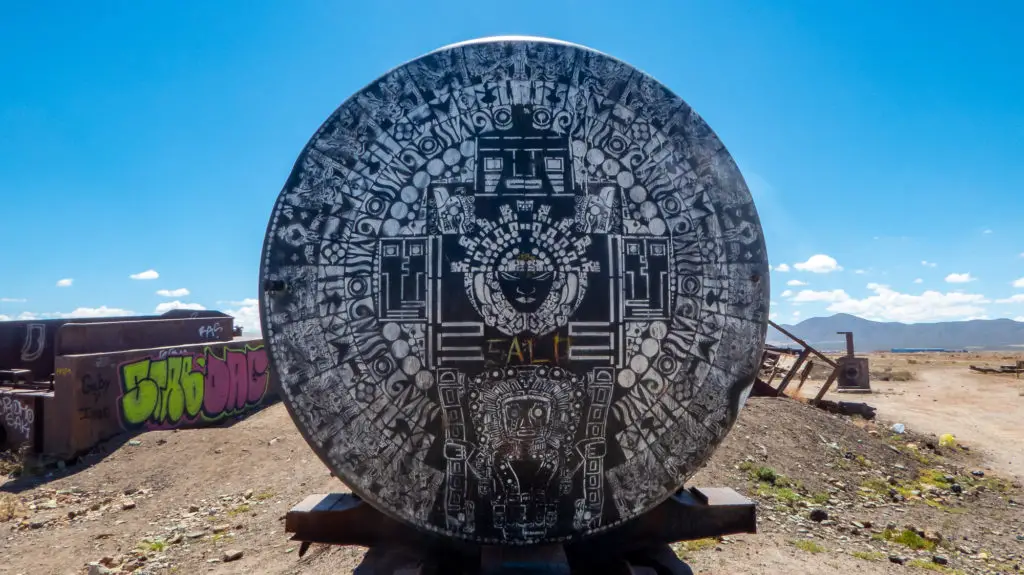
Is Bolivia’s Train Graveyard worth the visit?
I will be honest, I was a little disappointed by my visit to Uyuni’s Train Graveyard. This was certainly no reflection on the site itself but the sad result of it now being incorporated into all of the three-day salt flat tours.
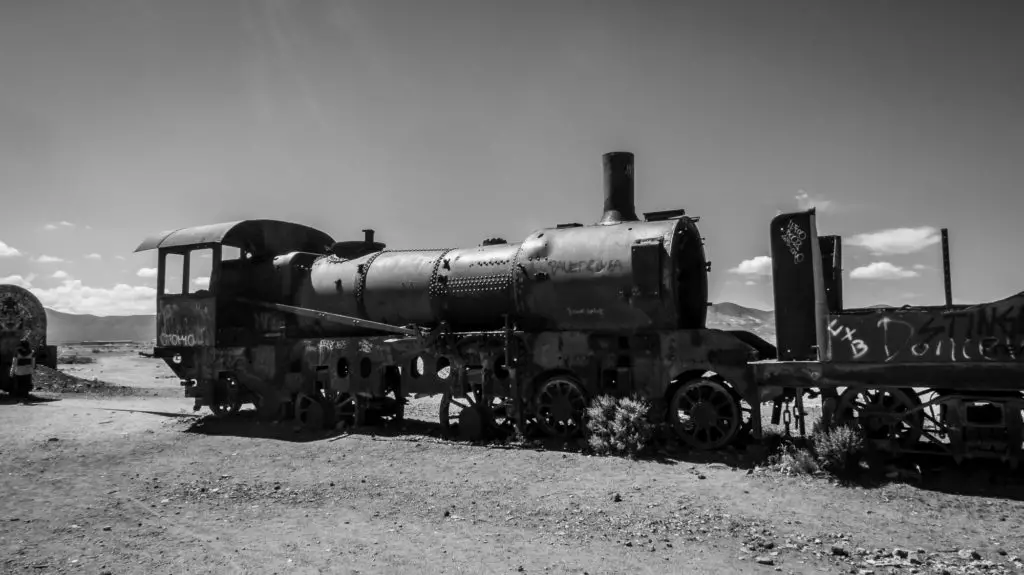
The place was absolutely heaving with people, all clambering on the trains and hollering at each other to get the perfect Instagram shot. I know I sound like the fun police but for me, urban exploration has always been about the desolation and the way this makes you feel.
Although I was able to get away from the crowds to an extent, I just couldn’t blot out the selfie-taking and lose myself in the moment. However, I would definitely still recommend visiting this site.
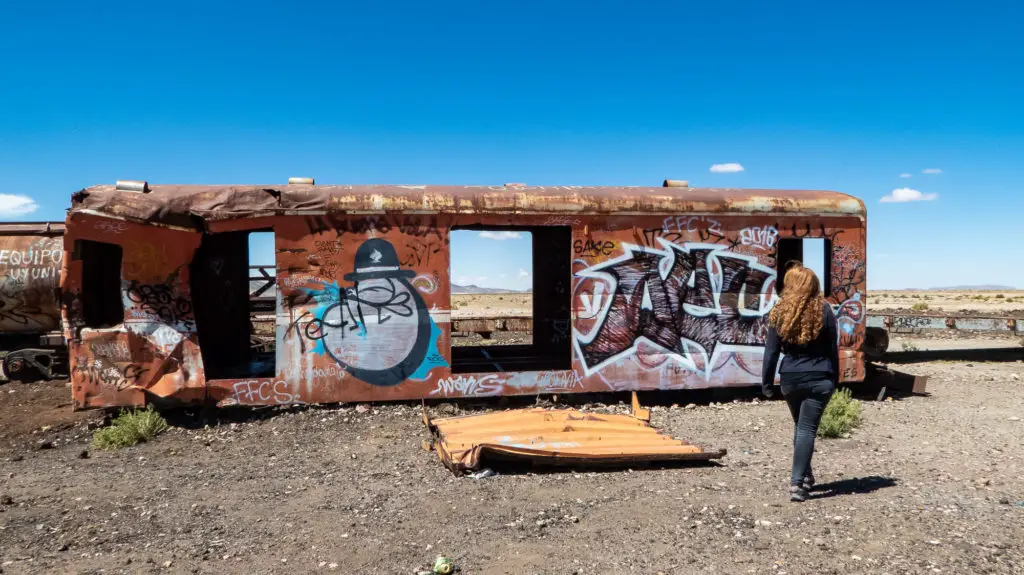
Bolivia’s Train Graveyard may be a quirky tourist attraction but it signifies something far greater. The Train Cemetery throws back to a time of economic success and better relations with Chile, back when Bolivia could still access the ocean. Although all that is left is rusting train shells, the impact that this industry decline has had on both Bolivian people and the country is still evident today.
When should I go and how do I get there?
If you are already planning a three-day salt flats tour, a stop at Bolivia’s Train Graveyard will likely be included in the itinerary. This is what we did, however, because most of the trips run on the same kind of schedule, it is likely you will be sharing the area with masses of people.
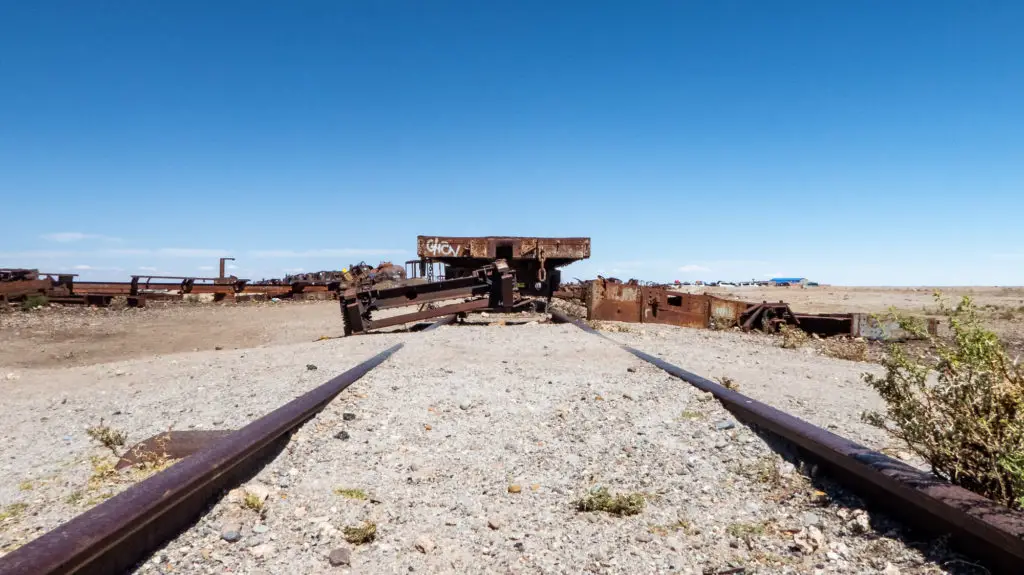
To get a more authentic opportunity to explore the graveyard, why not instead stay in Uyuni and make the journey from there? The Train Cemetery is located just 3km from the centre so it is possible to walk to the site or arrange a taxi. This will cost around 1.50 BOB (correct at the time of writing). Head to the Train Graveyard first thing in the morning or alternatively, in the early evening to beat the crowds.
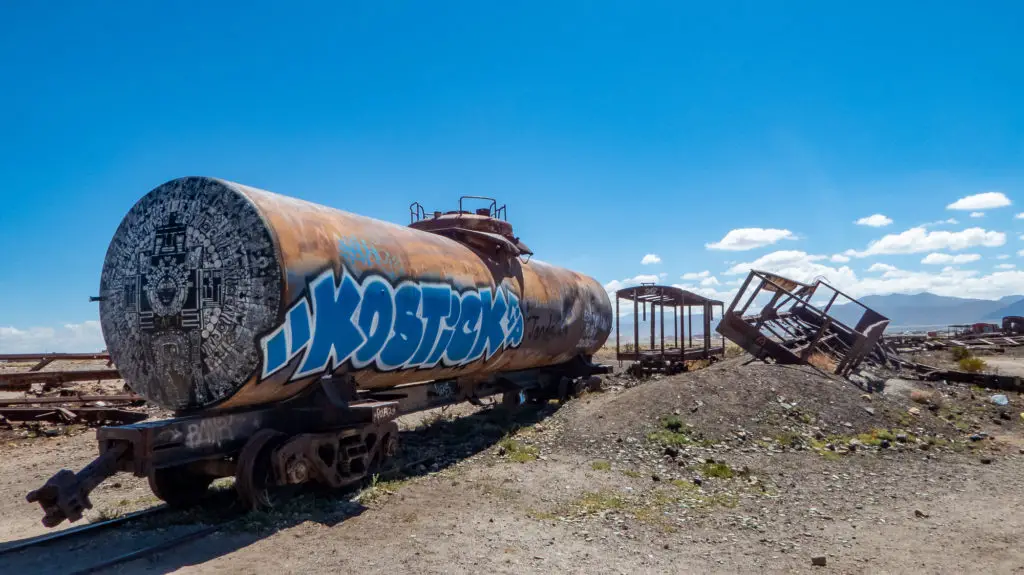
Extra resources
For more inspiration on urban exploration, check out Urbex, a photo blog ran by photographer and abandoned world enthusiast, Andre Joosse.
Heading to Paris soon? During our visit, Tim and I found a way to enter the abandoned railway that runs through the centre of the city. If you’re interested in doing the same, read this post on La Petite Ceinture.
Have you explored Bolivia’s Train Graveyard? What were your thoughts?
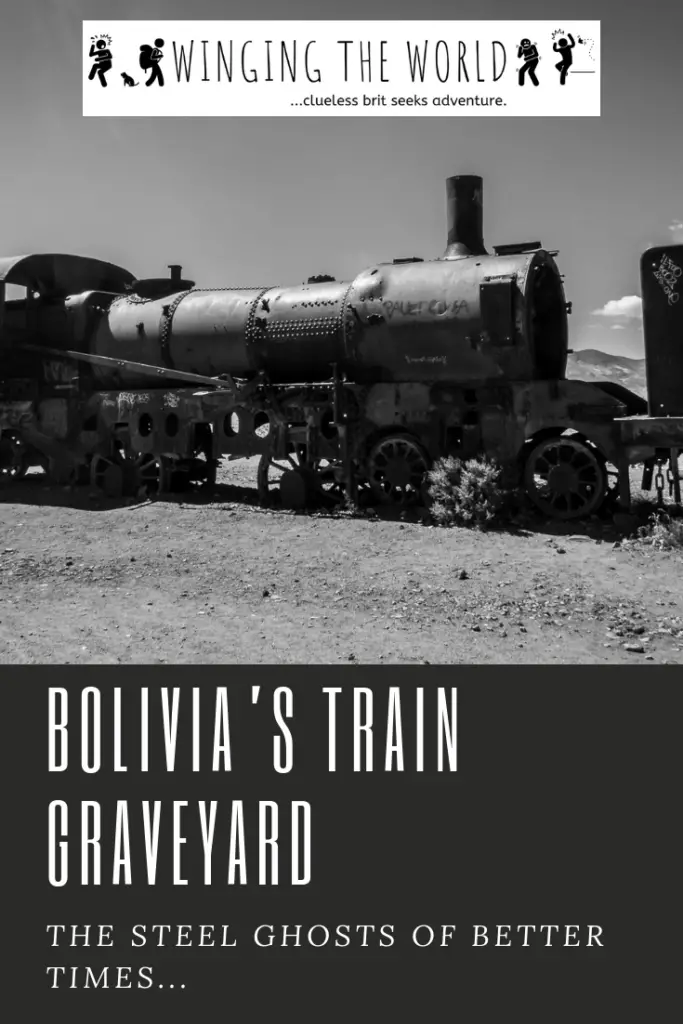
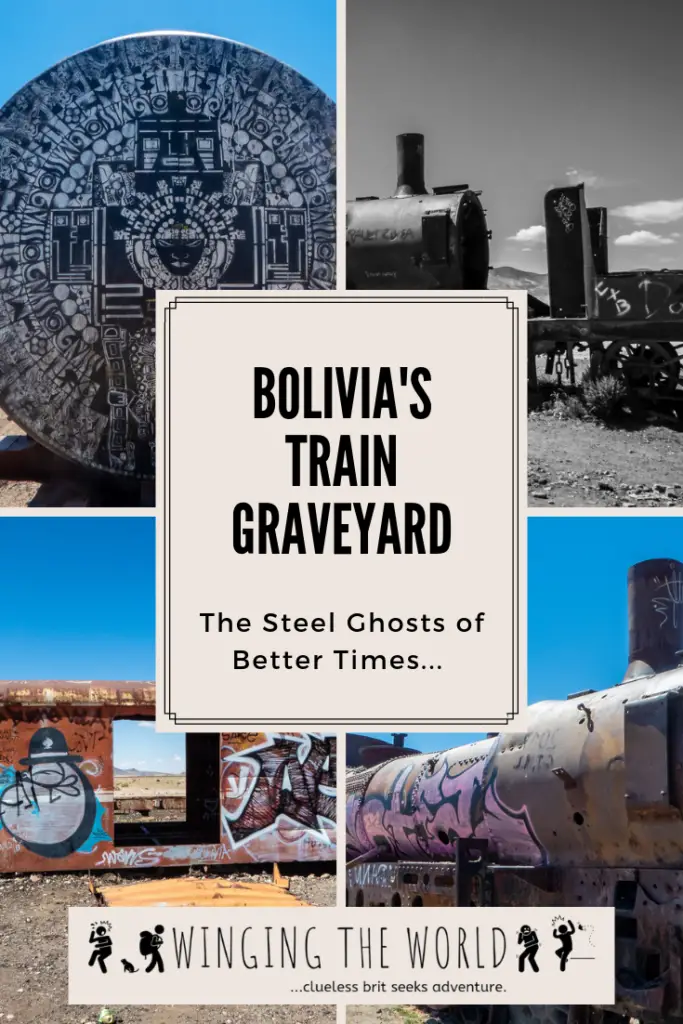
Love it? Pin it! 🙂

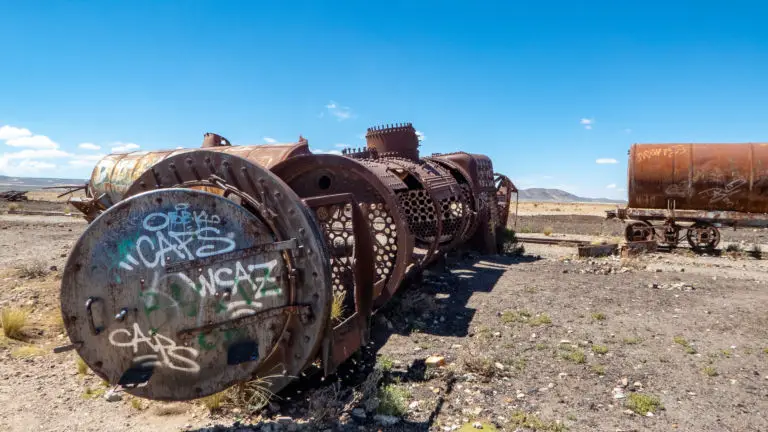
Nooo! This is so disappointing! It makes me so sad how popular stuff like this gets all fro the ‘gram 🙁 This place looks amazing, but like you, I would have been super disappointed by the crowds and the selfies!
I’m definitely curious to know what you thought of the Salt Flats since I’ve wanted to see them for YEARS!
You managed to get some great shots of the trains without the people, though!
I understand it to a point but I don’t know why some people act like they’re in theme parks when they’re at abandoned sites. The whole place has a different kind of vibe and I sort of feel like travellers should respect that. But that’s just me, I am getting old and grouchy as my travel years progress! 😉
The Salt Flats were amazing, honestly one of the most incredible places I’ve ever been. Definitely go if you get the chance. I promise that will not disappoint…!
This is pretty cool! Shame about the hoards of tourists disrespecting the train cars. Someone is bound to get hurt! You took some beautiful pictures and it’s super interesting to see the history behind these abandoned trains.
Thanks for reading Crystal! Yeah I think it is only a matter of time, they were definitely looking to rusty to be trusted in my opinion!
This place is incredible! Too bad it was not isolated as you expected. But it still is beautiful. Definitely going on my bucket list. Thanks for sharing!
It is a beautiful place, I hope you make it there some day! 🙂